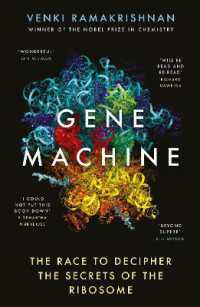Full Description
Following the long tradition that started in 1987, the International Workshop on Positron Studies of Defects 2024 (PSD-24) will be held in Como, Italy, in the period from September the 1st to 6th, 2024. The aim of the workshop is to provide an opportunity for exchange of the latest results and scientific information concerning the positron interactions with solids and surfaces, the generation of slow positron beams and their applications.
Contents
Preface
Monday, September 2nd - Techniques Session
Survey of Defects in some Spintronics Materials by Spin-Polarized Positrons
Experiments on Positron Moderation Efficiency of Tungsten Using a Magnetic-Bottle Trap
Monday, September 2nd - Semiconductors Session
Detection and Identification of Vacancy Defects in Antimony Selenide
Point Defects in GaN Single Crystals and Thin Films
Impact of Proton Irradiation on Donor Centers in Silicon for Quantum Technologies in Space: Challenging Issues in Identifying of Point Defects
Monday, September 2nd - Perovskites Session
Evidence of Different Positron Annihilation Quantum States in Methylammonium Lead Iodide Depending on Preparation
Lifetime Spectroscopy Experiments and Ab-Initio Calculations on Single Crystalline CH3NH3PbBr3
The Nature of the Bulk Defect Formation for Photonic Annealed FAPbI3 Halide Perovskite Thin-Film
Vacancy Defects in Hybrid Metal Halide Perovskites
Monday, September 2nd - Irradiated Materials / Metals and Alloys Session
Vacancy Defects Distribution in Self-Ion Irradiated Molybdenum
Slow Positron Beam Study of Lithium Implanted Boron Carbide
Tuesday, September 3rd - Semiconductors Session
Identification and Reversible Optical Switching of NV+ Centers in Diamond
Point Defects in Ga- and B-Doped Ge
Vacancies and Dopants in Epitaxially Grown Silicon
Tuesday, September 3rd - Porous Materials / Liquids / Techniques Session
Influence of Environmental Conditions on Surface Groups of Zeolite-Based Molecular Sieve
Melting Front of Ice: What Do the Positrons can Say about it?
Development of a Slow Positron Beamline Using a 30 Mev L-Band LINAC
Tuesday, September 3rd - Theoretical Session
Can Coincidence Doppler Be Used for Surface Analysis?
Theoretical Study on Conformer-Dependent Positron Binding Properties of Glycine
Quantum Monte Carlo Study on Positron Binding to Atomic Anion Dimers
Tuesday, September 3rd - Metal Oxide / Techniques Session
Positron Annihilation Spectroscopy of La-Doped Uranium Oxide
Characterization of LiNiO2 Cathodes Using Positron Annihilation Lifetime Spectroscopy
Coincidence Doppler Broadening Spectroscopy of Single Layer Graphene on Copper Using a Variable Energy Positron Beam
Positron Lifetime Changes in Pure Iron during Tensile Deformation and after Unloading Tensile Stress Measured by Gamma-Ray-Induced Positron Annihilation Lifetime Spectroscopy
Wednesday, September 4th - Techniques Session
The High-Intense Pulsed Positron Source MePS - Recent Developments and Future Plans
ReMade @ ARI: Accelerating the Circular Economy through Advanced Materials Research
Investigation of In-Flight Annihilation of Positrons Using Coincidence Doppler Broadening Spectroscopy
Wednesday, September 4th - Bio-materials / Biology Session
Free Volume in Complex Lyophilized Formulations by Positron Lifetime Measurements
Transforming Biomedical Imaging: Will Positron Annihilation Spectroscopy be the Promise of Preventive Diagnostics?
A New Approach for the Study of Cell Monolayers with Positron and Positronium Annihilation Spectroscopy Leveraging on Cell-Sheet Technology
Dose Absorption in Living Cells During Positron and Positronium Annihilation Spectroscopy Studies
Wednesday, September 4th - Metals and Alloys Session
Effect of Re on Irradiation Induced Defect Formation in W Alloys
Operando Positron Annihilation Lifetime Spectroscopy for Defect Detection in Hydrogen Embrittled Iron
Diffusion Kinetics of Vacancies and Self-Interstitials in Multi-Principal Elemental Alloys
Wednesday, September 4th - Metals and Alloys / Techniques Session
Microstructure Analysis of Xe20+ Irradiation and Postirradiation Corrosion of Zr-4 and Zr-1Nb Alloys by Positron Annihilation
Vacancy-Type Defects just below the Intergranular Fracture Surface of Pure Ni by Positron Probe Microanalyzer
Recent Development of New Experimental Technologies for Positron Annihilation Spectroscopy at University of Science and Technology of China
Thursday, September 5th - Techniques / Metals and Alloys Session
Towards the Investigation of Positronium Interactions in Laser-Written Buried Microcavities with the New Bunched Positron Beam at the Antimatter Lab of Trento
Real Time Monitoring of Defect Evolution and Relaxation by In Situ Positron Annihilation Spectroscopy (iPAS)
TwinPALS: A Digital Twin for Laboratory-Based Positron Annihilation Lifetime Spectroscopy
Thursday, September 5th - Metal Oxides Session
Ion Driven β- to γ-Ga2O3 Phase Transition and Resulting Defect Microstructure
Phase Transition and Structural Defects in Complex Iron-Containing Oxide Glasses Probed by Positron Annihilation
Layered Structure of Amorphous PbO Photoconductive Films Revealed by Variable-Energy Positron Annihilation Spectroscopy
Positron Drift in the Oxide and the Depletion Region of a Metal-Oxide Silicon Device Biased to Accumulation, Depletion and Inversion
Thursday, September 5th - Theoretical Session
Primary Thermodynamic Defects in Al+H and Feal Systems
Unveiling Ultra-Fast Charging Mechanisms in Graphene-Layered Cathodes through Positron Annihilation Spectroscopy and Density Functional Theory
Diffusion-Reaction Model of Positron Trapping and Annihilation for Complex Defect Pattern
Thursday, September 5th - Techniques Session
Variability in Feb Pair Association Rates in Silicon under Ultrasound Loading: Effects of Acoustic Wave Types
Positron Annihilation Spectroscopy in the H-Embrittled Iron-Based Materials
Poster Session - Metal Oxides
Decoupling the Interplay between Structural Defects and Luminescence Properties in Metal-Ion Co-Doped Gadolinium Vanadate
Characterization of Defects in TiO2 Films Prepared by Pulsed Laser Deposition
Probing the Defects in Nd3+-Substituted Bismuth Ferrite Nanocrystallites
Positron Annihilation Lifetime Spectroscopy for the Microstructural Behavior of NIR-Driven Photocatalytic Nanoparticles
Poster Session - Perovskites
Positron Annihilation Studies of CsPbBr3
Poster Session - Techniques
Upgrading the Coincidence Doppler Broadening Spectrometer at FRM II
Lifetime Assessment Model of Positron Annihilation for the Evolution of the Relevant Defects under Fusion Environment Simulation Experiments
High-Temperature Portable PAS-Oriented Sample (HIPPOS) Chamber
Model for Analyzing Positron-Electron Annihilation Spectra from Short Positron Bursts Containing many Positrons
Micrometer Positron Beam at the Scanning Positron Microscope (SPM)
Positron Annihilation in PTFE by Using PALSfit and Scilab Programs
The Time Separation Ability (FWHM) of Exponential Gaussian Function Used in Positron Annihilation
Towards the Formation of Ps-: First Stability Analysis by using Photoelectric Effect
Poster Session - Porous Materials, Polymers, Ice and Liquids
Free Volumes in Electron-Irradiated Biodegradable Polymers Using Positron Annihilation Lifetime Spectroscopy
Metal Powders Study Using Conventional Positron Annihilation Spectroscopy
Poster Session - Metals and Alloys
Onset of Vacancy Formation in Strained Al Alloys Studied by In Situ PALS
The S-Phase Formation in a High-Purity Al-Cu-Mg Alloy Monitored by Truncation during Heating-up
Defects in Materials: Limitations of the Trapping Model - The Influence of Corrupt Components in Positron Lifetime Spectra
Effect of Local Chemical Order on Vacancy Diffusion in NiCoCr Medium Entropy Alloys


![Bracket [On Sharing] (Bracket Journal)](../images/goods/ar/work/imgdatag/19571/1957183772.JPG)





